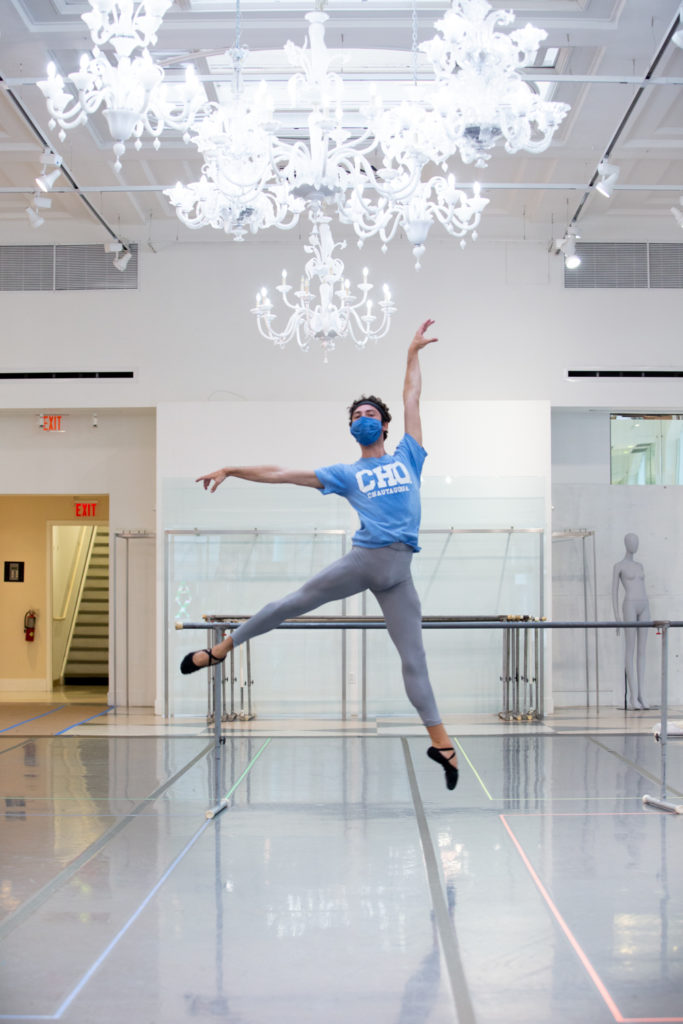The Ups and Downs of Life as a Commuter Student
Today, Ben Lepson is a corps member with Miami City Ballet. But as a teenager at the School of American Ballet, he struggled—and not just with demanding classes. Almost all his classmates lived in SAB’s residences, but Lepson, a native New Yorker, commuted every day from his family’s home in the Bronx. While his peers bonded through communal living and social time in the dorms, Lepson often felt left out. “I envied their closeness,” he recalls. “They had such a tight bond and I felt like I couldn’t be a part of it.”
Camaraderie is important for handling the pressures of a pre-professional program, but day students at a predominantly residential school can face special challenges, including forging connections with their peers. But there are also significant benefits to living at home while training full-time and, luckily, plenty of ways to handle the downsides. Here are some ways to get the best of both worlds.

Bond With Peers Inside and Outside the Studio
Students sharing dorm rooms, cafeteria meals and weekend downtime inevitably form strong bonds. “Locals,” often in the minority, can feel like they’re missing out on the fun, especially at the end of the school day when they’re leaving campus. But going home each night doesn’t have to prevent friendships. Roman Ho Zimbalatti, a grade 10 day student at Canada’s National Ballet School, says during the day there’s no differentiation among commuters or boarders, and he makes time to socialize after classes. “The people in residence do have a connection that I don’t really share, but I usually spend time at the residence hall after school, just hanging out or studying before my parents pick me up. We’ll go to nearby restaurants or shopping. I think it’s refreshing for us to hang out outside the confines of school,” he says.
Lepson, too, found ways to connect outside of classes. “We’d go to the ballet together, and sometimes I was invited up to the dorms. That was our bonding time,” he recalls.

Their numbers may be fewer, but day students can make great ties within their own community. Dylan Kattwinkel, an 11th-grade dance major at Boston Ballet School’s Professional Division at Walnut Hill School for the Arts, is on campus almost 12 hours a day and feels at home there. “Each day student has an affiliated dorm where we can hang out, so when we’re on campus, it’s like we live here. While everyone else has their dorm room, our locker room is like our shared living room, a space that’s just for us. We definitely have a good time in there, just talking and making connections.”
Advantages to Living at Home
A major convenience of residential life is living in such close proximity to where you eat, study and take classes. But there are plusses to commuting, argues Kattwinkel, who uses her twice-daily, 45-minute trip for homework and processing her day with whichever parent is driving. Having alone time is one of the biggest pros to living at home, adds Ho Zimbalatti. “Living in the residence, even with your own room, means constantly interacting with other people. But I get to come home and decompress, which is something I really value.”

Having time away from your ballet environment is a key ingredient to maintaining a healthy mentality and perspective, says Rachel Bar, director of research and health at Canada’s National Ballet School and a former NBS day student. “There is huge benefit to spending time every day and weekend with people who are not in the dance world,” she says, recalling her own training years spent living at home with her parents and three brothers. “It’s humbling, in a way, to go back to a place where not everyone is trying to become a ballet dancer. You have meals together, conversations about current events, and you get perspective on what other people are doing with their lives. It really helps with staying grounded.”
Lepson says living with his family helped him cope with his struggles. “Going home every night gave me a sense of relief and safeness and enabled me to go back each morning with a different mindset. It gave me strength and a sort of power, confidence that I could go into this feeling strong about myself. That was such a valuable gift.”
Focus on What you Have in Common
Ultimately, where you sleep at night is less important than the biggest thing all pre-professional students have in common: a love of dance and commitment to training. Kattwinkel says that’s what brings all the dancers at her school together, regardless of where they live. “We’re all here to do what we love. And what we love is the same thing, so that brings an automatic bond. That border has already been crossed; we’ve made our connection through our shared love of dance.”






